One of the things you want to ask Cuban singer Haila Maria Mompie when you learn that a perfume named after her will soon be launched in Cuba, is if she’s not afraid she will be made fun of by those who have always considered her as one of the most eccentric Cuban celebrities.
Her answer is emphatic, and although she does not explicitly say that she isn’t concerned about what people think of her and her perfume, that’s what she implies: “We live in a society where people love to criticize everything, and where it is unusual for artists, athletes, and celebrities to have their own clothing, cosmetic or perfume line. I’d love if that were common here. We have talented designers and perfumers, as well as popular artists who can represent these kinds of products.”
We meet Haila in Miramar, in one of the many new restaurants that have been opening in Havana over the last few months.
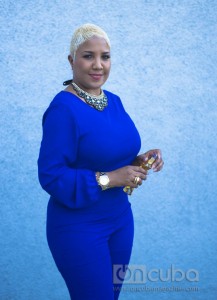
Her stage name, “The People’s Diva”, has earned her ample criticism from people who think she undeservingly proclaimed herself as such. Haila says that the name has stuck with the public, and denies having come up with it.
“When I was in Bamboleo, people would identify me as ‘Haila, the singer of Bamboleo’. When I joined Azúcar Negra, people would call me ‘Haila, the woman from Azucar Negra’. It was Eddy K who baptized me as The People’s Diva in a song I was invited to feature in.”
Haila didn’t start her career as a singer, but as a dancer, at an art school in Santiago de Cuba – the country’s second most important city –, from where she was later expelled.
“A dancing career is very demanding, and with this body…” she says, pointing to her rather voluminous figure.
Haila became popular while in Bamboleo, a band that included several women with shave heads as singers. In the late 1990s, Leonel Limonta created Azucar Negra, where she went to play a more prominent role as lead singer.
In 2001, when she was already known all over the country, her first solo album, Haila, hit the market. It was followed by Diferente (Different, 2004), Haila Live (2002), Tal como soy (The Way I am, 2008) and Mala (Evil, 2011).
Between a story and another, Haila makes some comments on her favorite food: “I’m eating lots of vegetables lately. I like vegetables. When I heard about moringa I became a fan. I would eat moringa salads all the time. But I really enjoy gourmet food, mixing flavors with colors, chocolate and cheese, and things like that. And I love Cuban food: fried beef, beef and potatoes, tostones.”
Haila is wearing a dark blue dress with long sleeves. Her hair is dyed and short. She is also wearing beautiful high-heeled shoes, a Michael Kors dark handbag, Chanel earrings with small white stones embedded, and a stone necklace, this one not as small.
“Tell me, Haila, are you a big shopper?”, I ask.
“Absolutely!” (she laughs). “I buy things all the time, all the time, all the time… In every country I visit, the minute I arrive, I go shopping. It’s like a disease.”
“And what do you buy the most?”
“Clothing, shoes, and makeup.”
“Which perfumes do you like?”
“I like floral, sweet perfumes. Thierry Mugler’s Alien, the Bond New York’s Chinatown, Loulou by Cacharel, which is no longer produced.”
“Which one are you wearing right now?”
“Chinatown.”
Haila describes Madame Mompié of having a fragrance like that of jasmine, peach, and flowers. “It’s a good tropical aroma to be worn at night,” she says.
Although many celebrity branded perfumes have been created, most people continue to prefer the same classical brands: Chanel, Christian Dior, Marc Jacobs, Narciso Rodriguez….
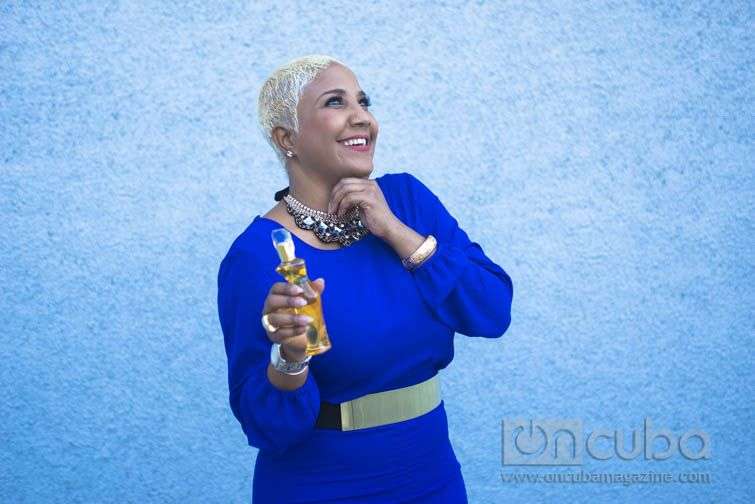
“Do you use Madame Mompié?”
“I do. I’m a fan of my fragrance. I´m not wearing it now because I keep giving away all the samples I have. I can’t leave my bag near my husband’s godmother because she takes every perfume I carry in it.”
Aned Mota, her husband and current producer and manager, a former vocalist of the popular Charanga Habanera for nearly 20 years, is sitting at the table with us.
Haila and Aned are widely known as a very romantic couple. “Now we work together, travel together. We live in an eternal honeymoon,” he says.
Haila forgot to bring a sample of the bottle of Madame Mompié to the interview. Aned agrees to go to her mother’s house to look for one, so we can smell it and get a couple of pictures.
Half an hour later, when Aned returns, we examine the 75-milliliter bottle containing a yellowish liquid. The bottle is shaped like a woman’s torso, very similar to the classic bottles of Jean Paul Gaultier.
“The bottle is also very similar that of one of the fragrances by JLo (Jennifer Lopez),” explains Haila. “It seems that JLo and I were looking for the same thing, a bottle that resembles the body of a woman. I also wanted a name that sounded classy, elegant.”
An experiment
Aned explains that many Cuban artists have had their fragrances made outside Cuba, which seems to be a relatively easy process.
“We have friends in Milan who have made perfumes for La Charanga Habanera, and they wanted to make a fragrance for Haila. But it makes no sense to create something like that in Italy. If the perfume is not first released in Cuba, in each of the 15 provinces of the country, I don’t think it will transcend as an authentic Cuban product.”
Madame Mompié is clearly a great experiment, even when it has as precedent the popular Alicia Alonso perfume, inspired by a legendary Cuban ballerina.
The options available to advertise this kind of product is one of the most uncertain issues of a phenomenon that seems anachronistic in Cuba. Shooting commercials and launching advertising campaigns does not agree with the nature of the Cuban media, all state-run and with little to no advertising content.
Haila and her perfume put us in front of two conflicting Cubas: one that takes the step of approving the industrial production of a type of merchandise that would make more sense in New York than in Havana; and another that is hesitant to go through with the plan, and therefore moves shyly, almost sheepishly.
For Aned, who is also the head of Haila’s Salamandra Productions, it would be very easy to shoot a commercial for Madame Mompié. Nonetheless, they are both happy with the progress they have made so far, and content with having been given some bottles of the product to start presenting it in her performances, and tell people where to buy it –something no one has told her she cannot do.
Following the official launch of the fragrance in December 2014, Haila and Aned spent several months making efforts to finally make it available for purchase in Cuba.
“At some point everything came to a stand-still,” says Haila. “We had to move heaven and earth to overcome the obstacles randomly posed by more than one decision maker –as is common in Cuba.”
Haila announced on her Facebook page that Madame Mompié was on sale at Old Havana’s House of Perfume, on the corner of Teniente Rey and Mercaderes Streets. The fragrance will soon be available in Caracol stores and at Carlos III shopping center.
According to Aned, at the moment of going on sale there were 32,000 units in warehouses.
They also made clear that Haila will not be making any money with the perfume. She is just letting a government-owned cosmetic company, Suchel, use her name and her image for the creation and commercialization of the product.
“So, basically what she earns with this is promotion?”, I say.
“Haila is not an artist who needs a lot of publicity,” Aned explains. “But I thought it would be a nice touch, something new that, in addition, had a lot to do her. Haila has many fans, and we want to put that popularity at the service of the Cuban perfume industry, to help it advance to a higher level. We want to show people what can be done combining perfumery with art.”
The bottle will cost around 10 dollars, like Mariposa or Camerata, two other locally produced perfumes considered amongst the best of the last few decades.
The perfumer of the stars
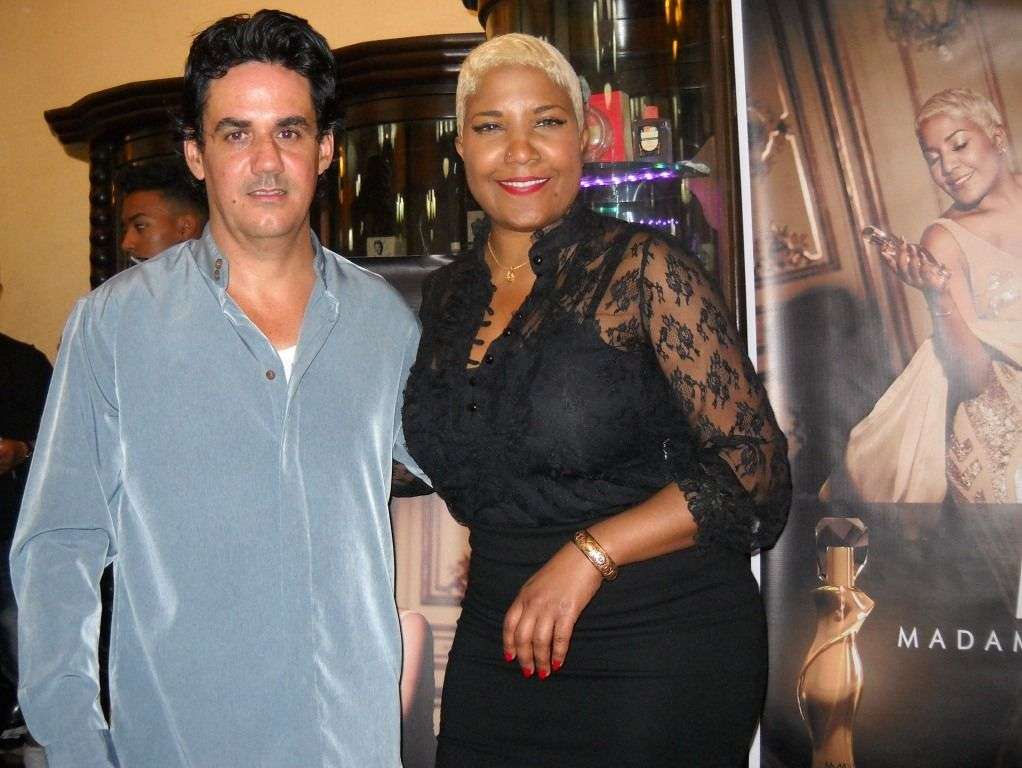
The creator of Madame Mompié is José Luis Mayoral, an alumnus of one of the Suchel Fragancias perfumer courses.
According to Mayoral, he found his inspiration for Madame Mompié in the video of Haila’s song “Bad Girl”, included in the album of the same name.
Mayoral, 43, owns a collection of more than 200 bottles of samples of original perfumes, which has helped him train and expand his olfactory memory –one of the fundamental skills for perfumers.
Before Mayoral could officially use the name of Haila, he used Desafio (Challenge) as a working title. Here’s his description of his creation:
“The perfume explodes with a fruit-like apple top note, followed by middle note of very floral aromas (red rose, jasmine, gardenia, magnolia and tuberose), with a warm touch of heliotrope, and a more classical base note, with intense sensual smells of vanilla, amber and musk.”
“When he started working on the perfume,” says Haila, “he asked someone close to me about my favorite smells, and the perfumes I used. The bouquet includes exactly the scents that I would use.”
In reference to the quality of Madame Mompié, Mayoral said it is good and competitive. “I did not use absolutes made of expensive natural flowers, but replicas instead, something that does not diminish its natural touch. In this perfume, I used a total of 60 raw materials, which come mostly from providers of companies like Robertet (France), Ventos and Sensient (Spain), Givaudan (Switzerland) and Meheco (China).
In his circle, many call Mayoral “The perfumer of the stars.” He is one of the few alumni of the Suchel Fragrancias course –only three more students graduated in his class– with an interest in celebrities. “Maybe the others don’t realize how important this could be for the prestige and life of Cuban perfumery,” says Mayoral.
Madame Mompié is not the first project for which Mayoral has found inspiration in his admiration for a Cuban artist. Haila is not the only celebrity who has given her consent to name a perfume after her.
“Madame Mompié is the only of several of my perfumes for artists that has been approved so far for industrial production. I also worked with another perfumer on a design for a fragrance named after Polo Montañez, which had the approval of his family in Las Terrazas.”
The project to make a perfume as a tribute to late Cuban singer and composer Polo Montanez has already been approved. It will be named “Guajiro natural”, as Montanez was known.
Some time ago, the perfumer also worked on a design for the actress and TV presenter Edith Massola, “with her full approval”. Edith had even chosen the name of the fragrance, which would have been called Eau d’Edith. Mayoral says the project has been on standby.
The two fragrances Mayoral dreams of creating someday correspond to two figures he has in high regard: dancer Liszt Alfonso and songwriter Carlos Varela. “I haven’t had a way to reach this great woman, whose talent I admire so much,” said Mayoral. “In the case of Carlos Varela, I am also a fan of his entire musical repertoire. He is the best of the best.”
Fragrances Made in Cuba
After 1959, the cosmetic and perfume industries fell into decay in Cuba following the nationalization of foreign companies by the new government. In an article titled Brief History of Cuban Perfumery, Careni Lorenzo explains that old cosmetic factories and workshops became government property, and their previous owners left the country.
In the 19th century, Cuba began importing perfume from Europe, mainly from France, and to a lesser extent, from Germany and Spain. “French products could be found on the island in every perfume store, pharmacy, and at the private homes of perfume sale agents,” wrote Lorenzo.
The first factory of cosmetics and toiletries in Cuba, Sabatés, was founded in 1860. It was followed by Crusellas, founded in 1863. Sabatés and Crusellas led the production and marketing of Cuban cosmetics for years, before having to ally with other foreign companies in order to withstand the competition.
With the U.S. occupation of Cuba in 1898, and the subsequent increase of American travelers and businesspeople, brands such as Avon, Revlon, Colgate-Palmolive and Mennen were introduced to the country. In the early 20th century, the most iconic perfumes of the grandes maisons francaises were available in stores like El Encanto, El Palacio de Hierro and Fin de Siglo.
Today Suchel Camacho is the leading producer and marketer of hygiene and cosmetic products in Cuba. Founded in the 1990s, it covers about half of domestic demand –although Cubans seem to turn to Suchel more by necessity than by choice.
“It pains me to see that the big achievements of Cuban perfumery in the 1970s and 1980s have fallen into oblivion. Cuban perfumes like Diamante Negro, Fantasia and Galeón even won major awards at international fairs during those years,” said Mayoral.
“There hasn’t been a true interest in perfumery in Cuba,” notes Mayoral. “No perfumer has been sent to be trained abroad, at one of the big schools in a first world country, so that local perfumers and especially the new generations of professionals can benefit from that knowledge. We have managed to learn what we can, moved by a personal interest. Our raw material suppliers are some of the people who share their knowledge and experiences with us.”
Raw materials for high quality perfumery are essentially of natural origin, a factor that determines the high cost of these products. Producing one kilogram of jasmine or rose absolute, for instance, takes an entire flower field. This amount of absolute can cost approximately 20,000 Euros, while a bottle of perfume produced from it can be around 70-100 Euros.
“It’s a profitable business, just not in Cuba, because those prices are too high for here,” says Mayoral.
“Criticism strengthens me”
“What slogan would you like to use if a commercial were to be produced and broadcasted for your perfume?”
“Madame Mompié: the scent of a woman,” says Haila in a mellow tone, posing for an imaginary camera, as if she had rehearsed it before.
“When you talked in a previous interview about the name you had given the perfume, you said that “everything that comes after this” would be called Madame Mompié. What might come after this?”
“Madame Mompié is already a brand that could designate other beauty products: creams, makeup, a clothing line…”
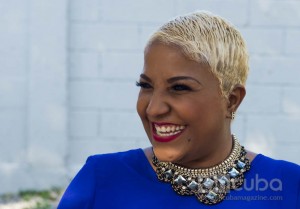
“And what’s next in your career?”
“I’m working on the production of my sixth album, Haila Diferente (Vol II), which is going to include a track titled A Woman’s Perfume (Perfume de mujer), inspired in Madame Mompié. Haila Diferente (Vol I) was the album that gave my career the push of good luck I needed. It included different genres, such as ballads, son, salsa and guaracha. I want to do something similar in this second volume with songs by my regular composers: Albertico Pujols, Ricardo Amaray, my husband, who is one of my greatest composers, and Isaac Delgado.”
“Why don’t you write your own songs?”
“When I was young… – I mean, when I was younger, because I’m not that old – I had notebooks full of stuff I wrote. I don’t write out of laziness. Or maybe because my muse has abandoned me.”
“You are going on a tour of Europe soon: Helsinki, Rome, and Milano. How do you do in these places where Cuban dance music is not as popular?”
“That’s what you think! There is a big Latino community in Europe, and many Europeans take salsa lessons. Cubans are in style now; there are many people interested in our culture.”
“You are already popular in Cuba, do you ever think of becoming famous outside the country?”
“Sometimes that bug bites me. I’m the kind of artist who doesn’t like to be stopped. I’m constantly growing and preparing myself for whatever may come. After reaching the top in Cuba, I think the next step has to be big. Right now I’m working on a musical with Isaac Delgado, called Salsa, Mambo and Cha Cha Cha. It’s a tribute to Cuban music, and it’s made for Broadway, so we will be in New York anytime. The project also includes Bobby Carcasses and Heidy Chapman, and a cast of 22 spectacular dancers and an amazing jazz band.”
“How do you deal with criticism?”
“Very well. As the song goes: ‘Criticism strengthens me.’ If they are not criticizing you is because you don’t exist. What happens is that sometimes the public forgets that we are also human. I’m a woman like all the others, as I say in a song I will soon release.”
“How do you picture yourself in 20 years, when you are 60?”
“Oh, my god! I wish I would live that long. I will go on, as long as I don’t make a fool of myself. Hopefully, at 60 I’ll be like Celia Cruz when she was that age: full of vitality, and will still be singing.”

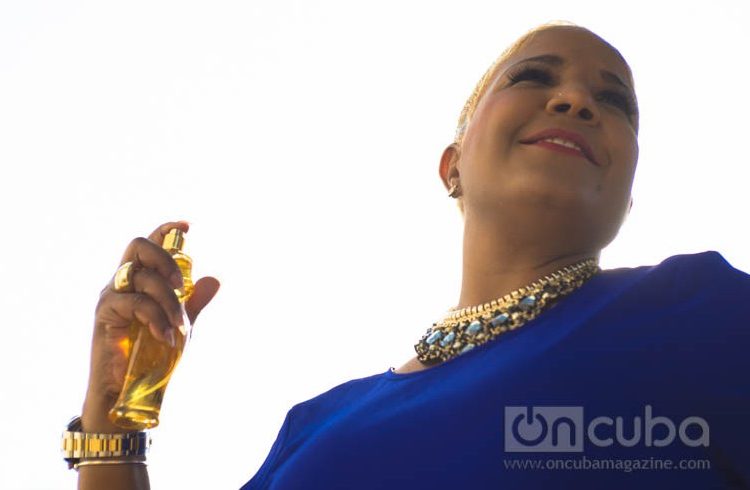




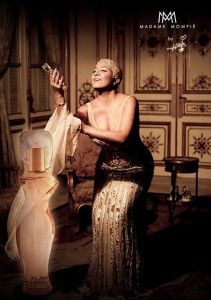
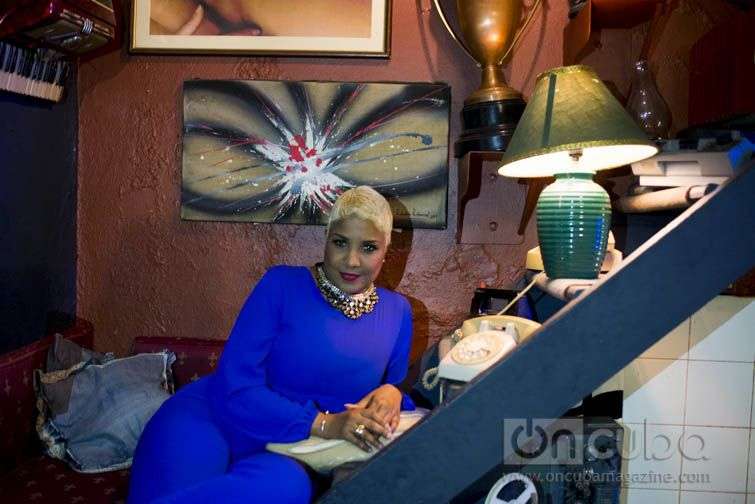





Gostariabde saber onde compro esse perfume. Ganhei de um amigo cubano e não consigo compra aqui no Brasil. Moro em Fortaleza-ce